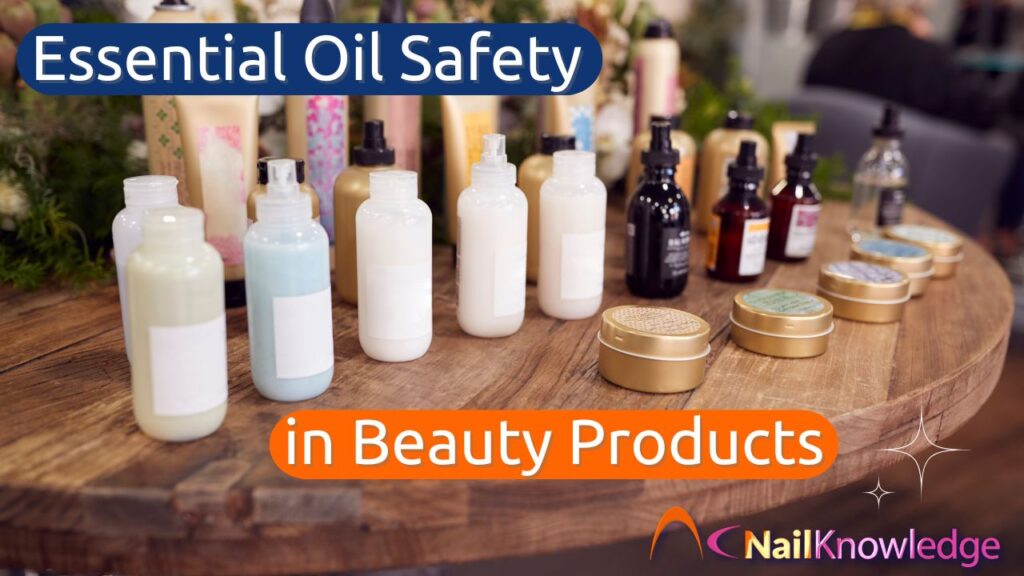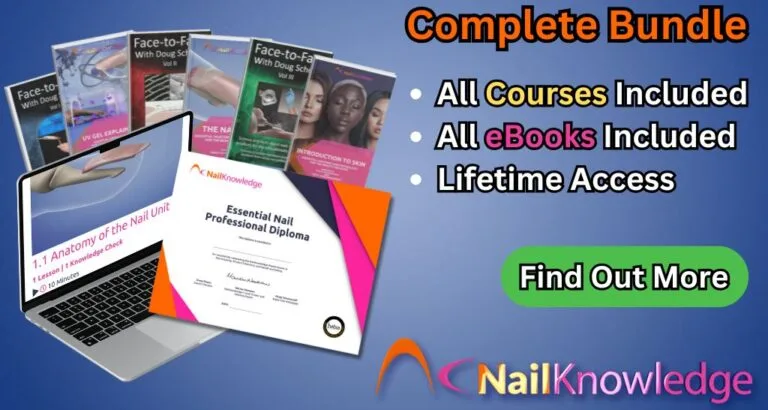Essential Oil Safety in Beauty Treatments: Separating Facts from Myths
There’s a growing obsession with essential oils these days, especially in the wellness, beauty and nail industries, but essential oil safety in beauty treatments is often overlooked. Somewhere between a natural remedy and a luxury indulgence, they’ve been touted as the answer to everything from stress to skin problems. But as Doug Schoon, a scientist and veteran of the cosmetic and beauty industry, recently highlighted in a now-viral Facebook post, there’s a real need to pause and ask: are we using these oils safely? Particularly when it comes to ingestion and skin contact?
Let’s be clear from the outset. Schoon isn’t against essential oils. In fact, he’s a long-time enthusiast and even a developer of products containing them. What he is against, however, is the rampant spread of misinformation and the dangerous practices that some people have started to adopt, particularly within the beauty community.
The Dangers of Ingesting Essential Oils in Beauty and Wellness
It might sound shocking, but many people are now being encouraged to ingest essential oils as a form of therapy or disease prevention. Just a few drops in a glass of water, they say. Unfortunately, this practice can be more harmful than it appears.
Aromatherapy oils are, by definition, cosmetics. They’re not food, nor are they medicines. While some people claim to be properly trained in the ingestion of essential oils, even they acknowledge the risks. That should be a red flag. Schoon points out that the overwhelming promotion of essential oils online often lacks context, caution and credible backing. Instead, it promotes self-diagnosis and unproven remedies.
Another issue is the use of the term “therapeutic grade”. It sounds scientific, doesn’t it? But here’s the kicker: there is no universally recognised certification for “therapeutic grade” essential oils. It’s a marketing term created by companies to sell more products, not a guarantee of safety or efficacy. The assumption that “therapeutic grade” equals safe for ingestion or medical use is not only misleading, it’s dangerous.
Understanding Essential Oil Composition and Purity Claims
Let’s talk science. Essential oils are not chemical-free. In fact, they’re entirely made up of chemicals. This isn’t a bad thing. Everything is a chemical, from the air we breathe to the water we drink. But when you call something “chemical-free”, you mislead people into thinking it’s somehow gentler or safer. That’s simply not the case.
There are over 3,000 known chemical compounds in various essential oils. Their makeup depends on countless factors: the plant species, the part of the plant used, the soil, weather conditions, harvesting time and even how the oil is stored. Because of this variability, no two batches are ever quite the same.
Purity is often championed as a virtue in the essential oil community, but higher purity can mean higher risk. Undiluted essential oils, while potent, are more likely to cause adverse reactions on the skin or inside the body. That’s why dilution is essential, and not just a recommendation, but a safety requirement.
Topical Use: Essential Oils and Skin Sensitivities in Salons
In beauty salons and nail studios, essential oils are often used in massages, facials, and even incorporated into nail treatments. But few professionals understand the full implications of using them on the skin.
Some essential oils are irritating by nature and can provoke allergic reactions, especially with prolonged or repeated exposure. There’s a common myth that essential oils can’t cause skin allergies because they contain no proteins. Schoon debunks this with an elegant example: nickel causes allergies, and it has no proteins. Irritation and allergic reactions are not signs of “detoxing”, as some believe — they are your body’s defence mechanisms going into action.
For beauty professionals, this means never applying undiluted essential oils directly to the skin. Always use a suitable carrier oil and understand the specific dilution rates for different oils. What works on one client may be harmful to another, especially those with sensitive or allergy-prone skin.
Essential Oil Risks and Gut Health: A Hidden Concern
One of the less-discussed risks is how essential oils can impact gut health when ingested. Experts on both sides of the debate agree that they can disrupt the delicate balance of bacteria in the digestive system. Even though our intestines are home to several pounds of bacteria, ingesting antimicrobial essential oils could tip the scales.
Some proponents argue that essential oils only target “bad” bacteria, not the beneficial ones. But there’s no scientific evidence to support this. If they do act selectively, then they are behaving like antibiotics, and we all know the risks associated with antibiotic overuse. Long-term disruption of gut flora can lead to digestive problems, weakened immunity and more.
Essential Oil Adulteration and Misinformation in the Industry
Another concern is adulteration. Some essential oils are blended with cheaper ones to cut costs. Without lab testing, these changes can go unnoticed. This poses a real risk to professionals who rely on essential oils for treatments, assuming what’s on the label matches what’s in the bottle.
As a beauty or nail professional, it’s your responsibility to trace the source of your essential oils. Buy from reputable suppliers, request certificates of analysis, and avoid those that don’t provide transparent information. Essential oil safety in beauty treatments starts with knowing what you’re using.
The Myth of Natural Equals Safe
“Natural” has become synonymous with “harmless”, but that’s not only incorrect, it’s dangerous. Schoon reminds us that many naturally occurring substances are harmful. Snake venom is natural. Poison ivy is natural. Being natural doesn’t mean something is suitable for skin or safe for ingestion.
Essential oils, though derived from plants, can be potent irritants and toxicants. They can cause blistering rashes, neurological symptoms, gastrointestinal distress and more. The US FDA lists tea tree oil, a popular favourite, as capable of causing a wide range of adverse effects when used improperly.
So when clients ask whether essential oils are safe, the honest answer is: “It depends.” It depends on the oil, the method of application, the dilution, and the person receiving the treatment.
Professional Guidelines and Industry Recommendations
The Alliance of International Aromatherapists (AIA) offers a clear stance. They do not recommend the internal therapeutic use of essential oils unless under the guidance of a qualified healthcare practitioner. This is a critical point for professionals in the beauty and nail industries.
Training matters. And not the kind of training that comes from a weekend workshop or an online MLM webinar. We’re talking about clinical-level education, grounded in biology, chemistry and evidence-based medicine. If someone claims expertise after just a few days of essential oil “training”, be sceptical.
Final Thoughts: Putting Essential Oil Safety First in Beauty Treatments
Doug Schoon’s deep dive into the misuse and misunderstanding of essential oils is a wake-up call for anyone in the beauty and wellness sectors. Enthusiasm should never override caution. Essential oils offer many potential benefits, but they must be used responsibly.
Beauty professionals must educate themselves and their clients. Avoid myths, ignore hype, and prioritise safety above all else. Whether it’s for aromatherapy, skincare or nail treatments, essential oil safety in beauty treatments is not optional, it’s essential.
Before adding a new oil to your treatment menu or recommending one for home use, ask the right questions: Where does it come from? Has it been tested? Is it safe for this use case?
Stay curious, but also stay critical. Because when it comes to essential oils, what you don’t know really can hurt you or someone else.


